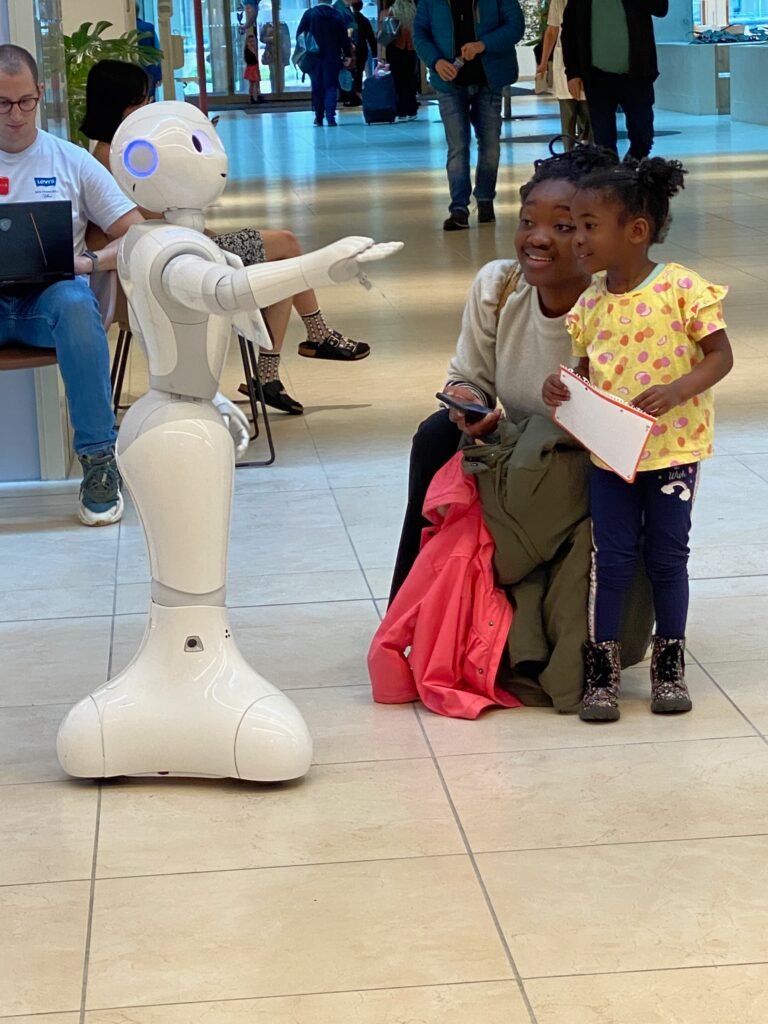NeurotechEU at 100 year anniversary Radboud University
NeurotechEU and the SPECS lab at the Donders Institute at Radboud University organised an exhibition during the 100 Radboud Gestures in honour of their 100th anniversary.
During this event, all visitors could discover our neurotechnology research and experience the latest advances in processing and using brain data. They could interact with the brain data visualisation, our humanoid robot SPECSbot, and test our mobile application for rehabilitation after brain damage. From 8 to 12 May, we were located in the hall of the Radboudumc in Nijmegen, the Netherlands.
Visitors could enter the eXperience Induction Machine (XIM), a unique data visualisation infrastructure which includes BrainX3 (also exhibited during the Radboud open house), a powerful tool that analyses complex brain data, providing neuroscientists and clinicians with the means to advance research and clinical applications in personalised medicine. Also in XIM you can interact with a computational model of the brain and see what happens when you stimulate it.
Background on BrainX3
A central challenge in neuroscience is to integrate multi-modal data, provide it with semantic labels and fill gaps in empirically accessible data through simulation. BrainX3 is an interactive neuroinformatics platform designed to help neuroscientists and clinicians visualise, analyse, and simulate human neuroimaging, electrophysiological data, and brain models. The platform aims to facilitate research and clinical use for personalised medicine, supporting diagnostics, prognostics, and intervention planning. BrainX3 offers an intuitive user experience, supporting the processing of different data formats and 3D visualisations, and interaction techniques, and it has been shown to be more effective than other desktop tools.
The platform is designed based on several principles of human information processing, including a human-in-the-loop approach that emphasizes the active exploration and interaction with heterogeneous and complex data, an immersive environment that works on desktops, large screens, immersive rooms and virtual reality headsets, and cognitive interfaces that use wearables and additional behavioral and physiological sensors to support intuitive and non-obtrusive interaction.
BrainX3 is developed using a layered architecture with four levels: the Graphical User Interface (GUI), Application Core, Native Plugins, and Specific Plugins. The platform offers a multimodal exploration framework, where the user can access a logical organisation of the dataset, a semantic corpora query, statistical analysis, and the possibility of using artificial intelligence and machine learning algorithms to support the AI-assisted exploration of complex brain data.







